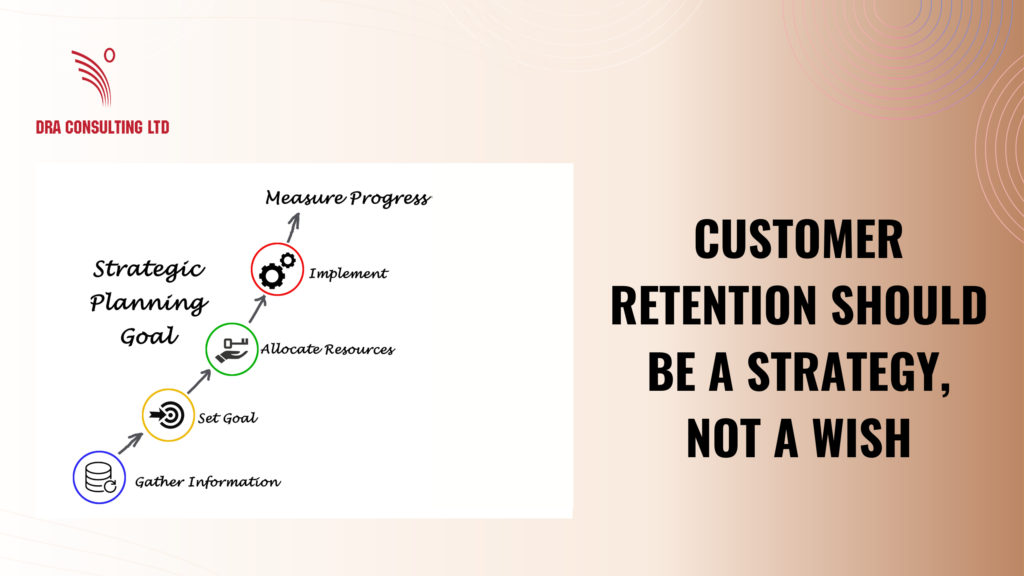The whole point of delivering an extraordinary customer experience, is to ensure that the customer returns, again and again. As well, it’s about turning a first-time purchaser into a repeat customer, who is delighted to hand over his or her money. Sounds straightforward, doesn’t it? Well then, if it’s so rudimentary, how come many businesses have a high churn rate?
The churn rate of a business is basically the difference between how many new customers are onboarded by a business at the start of a year, compared to how many would have left at the end of the year. On the face of it, a business could end up with a negative balance, with more customers leaving than staying.
But there’s a bigger question of whether businesses are minded to even build intelligence around their churn rates. For many, it’s just too much trouble. Instead of investing in all of the research and technology needed to keep on top of the metrics associated with customer retention, it’s just easier to normalize data-ignorance.
The whole point of delivering an extraordinary customer experience, is to ensure that the customer returns, again and again.
Truth be told, if a business is unaccustomed to utilizing data science in its decision making, then disinterest in customer experience metrics would be a high probability. On the other hand, tracking customer engagement levels intentionally, yields such rich data that the boardroom gets transformed into a space where happy collisions occur between intuition, science and strategy.
I can’t over speak about the benefits of data analytics in tracking progress when new service delivery standards are being implemented. In one of my recent transformation projects, several new service delivery standards were introduced across the business and the managers were told that they would be allowed implementation autonomy for an initial period, after which we would start tracking the adoption rates.
Firstly, customers should not be thought of as one-time purchasers, but should be considered through the perspective of their lifetime value.
During the early period, progress was slow, but when we started tracking the progress and, more importantly, revealing the results “publicly,” so that the data could be seen by everyone in the business, the adoption footprint changed significantly. The takeaway here? Data intelligence gives a better reflection of the reality than guesswork and when the data is placed in the public domain, no one wants to look delinquent.
When businesses begin to look closely at the monthly opening and closing figures for customer patronage levels, the gateway for triggering service improvement opens. The good news is that jumpstarting improvement to customer retention does not take much effort, it simply takes a willingness to make the first step. Here are some thoughts on how a business can get started on this retention journey, by simply adjusting its view of the customer.
In addition to individualizing the customer’s experience, the business should think of its customers as a community to be nurtured, as well.
Firstly, customers should not be thought of as one-time purchasers, but should be considered through the perspective of their lifetime value. When a customer walks through the door of the business, he or she brings the potential to become a lifetime customer, through repeat purchasing.
All that the business has to do is train its staff to attribute a minimum dollar value to all customers and work on meeting that minimum value through the customer’s buying experience. When the initial buying experience meets or exceeds the customer’s expectations, the runway is primed for the next purchase.
Next, in addition to individualizing the customer’s experience, the business should think of its customers as a community to be nurtured, as well. This approach double binds the customer and the business. Customers get their unique needs met and also become beneficiaries of programs and activities that promote a sense of belonging. The payoff for the business comes in the form of high customer engagement that generates insights for improving the user experience and strengthening customer support initiatives.
Thirdly, businesses need to view their customers as prospective advocates and future champions.
Thirdly, businesses need to view their customers as prospective advocates and future champions. The more first-time customers are treated extraordinarily well, the more enlarged the opportunity for these customers to become promoters of the business, through their advocacy.
High customer churn is avoidable and high customer retention is desirable. In this, the new era of the customer, businesses would do well to include these two goals in their target planning for one major reason.
It’s cheaper to keep a customer than to acquire one.

